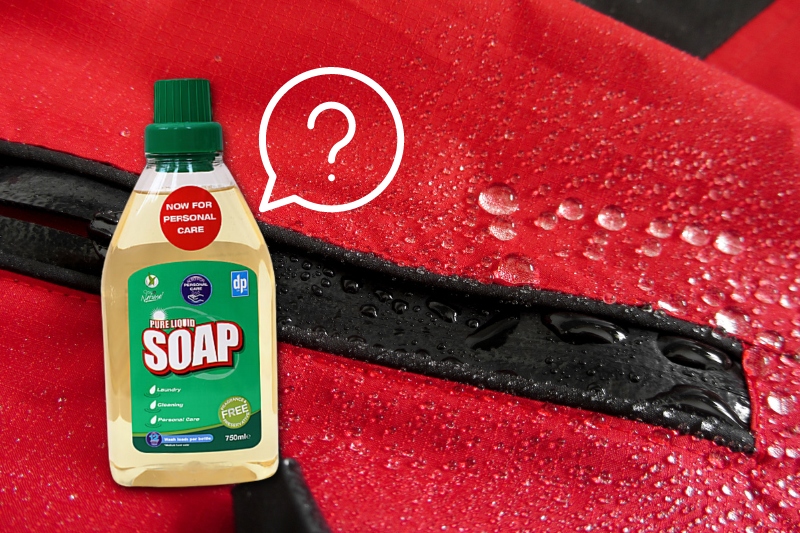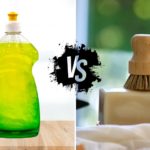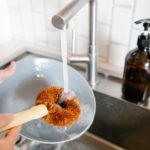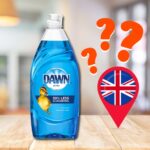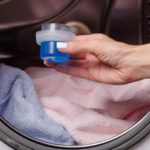Faced with the drizzly English weather, we find ourselves reaching for a wide range of waterproofs. And we need to be able to wash them safely to protect the waterproofing.
In this article, we’ll find out how to use pure soap (also known as liquid soap) for washing waterproofs as this is the safest cleaner to keep the waterproofing intact.
Can You Wash Waterproofs with Regular Detergent?
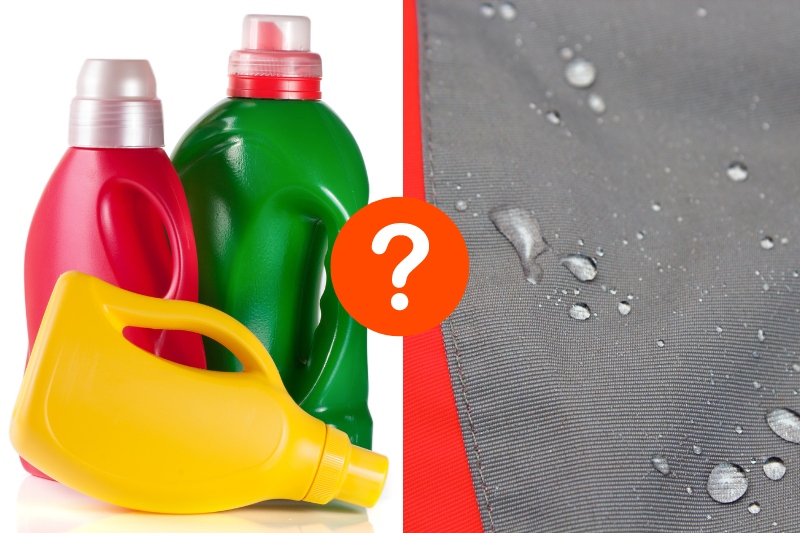
Before washing any garment, you should always check the care instructions. Some waterproofs may be able to be washed using normal detergent.
However, generally, waterproofs shouldn’t be washed with normal detergent as it can affect the waterproof layer.
Whilst they won’t break down the waterproof layer, detergent and fabric softeners can clog up the fibres in that are necessary for the clothing to breathe.
Using incorrect products on waterproofs may not stop them being water resistant, but it may cause them to become less effective in wicking moisture. This could lead to the clothing item itself becoming water-logged and heavy.
Why Use Pure Soap to Clean Waterproofs?

One option for cleaning waterproofs is a specialised waterproof detergent. However, this may not be practical if you don’t find yourself washing waterproofs that often.
Instead, you can use pure, liquid soap to clean your waterproof items as it’s safe to use and can be used to clean a wide range of items.
Pure soap is made using vegetable oils and lye and doesn’t contain any of the chemicals that clog up waterproof fabric. It’s mainly found in a solid bar but it can also be made into a liquid with the addition of water.
Pure, liquid soap is widely available and is great for laundry as it spreads through your laundry with ease, getting into all the nooks and crannies.
How to Wash Waterproofs with Pure Soap
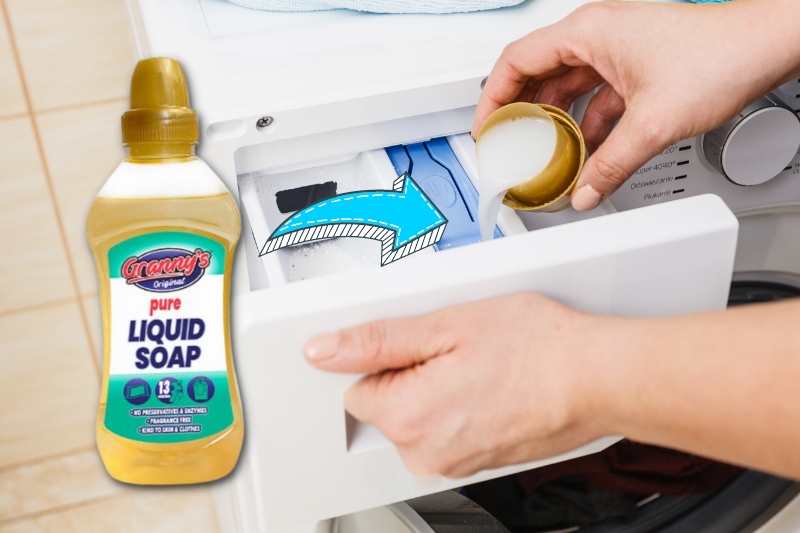
As previously mentioned, you should always consult the care instructions before washing your waterproofs in case they’re lined with other delicate materials.
If they can be washed safely in the machine, here’s how to wash them with pure soap:
- Do up any zips, buttons, Velcro or flaps.
- Clean out your detergent drawer and the washing machine drum if necessary to remove any detergent or fabric softener residue.
- Add your liquid soap to the detergent drawer or directly to the drum for top-loading machines. Use around 2 caps for lightly soiled loads in hard water areas and around 4 caps for heavily soiled loads in hard water areas.
- Wash your waterproofs on a delicates cycle with a low spin speed.
- You can line dry your waterproofs. Putting them in the tumble dryer on a low heat may also boost the waterproofing again.
Waterproof Clothing Terminology
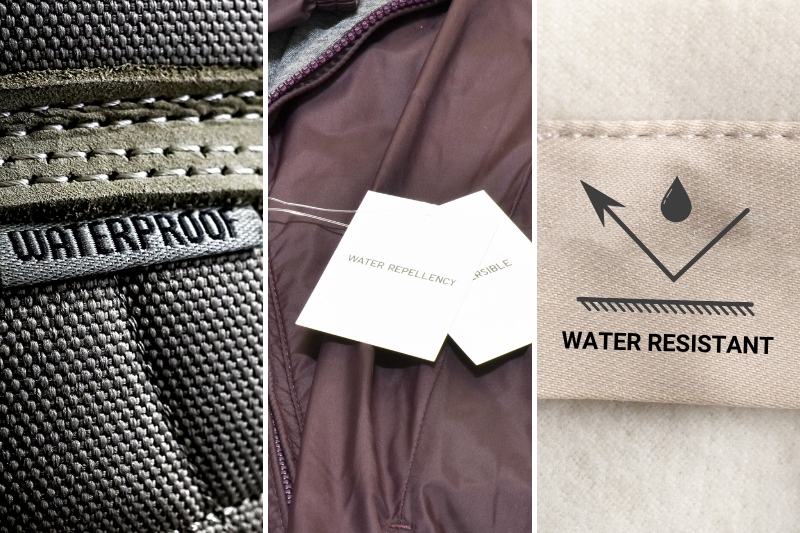
The word ‘waterproof’ can be used as an umbrella term for different types of water-resistant clothing:
- Waterproof: The highest level of protection, safe to submerge in water.
- Water-repellent: A medium level of protection, can mostly keep water out.
- Water-resistant: A low level of protection that can resist some water penetration but not completely.
Waterproof clothing can also be non-breathable, such as a plastic rain mac, or breathable, such as an item of sports clothing, designed to wick sweat.

In The Wash is your guide to the best laundry and cleaning products, tips and tricks. Our mission is to solve the UK’s cleaning and laundry dilemmas!
